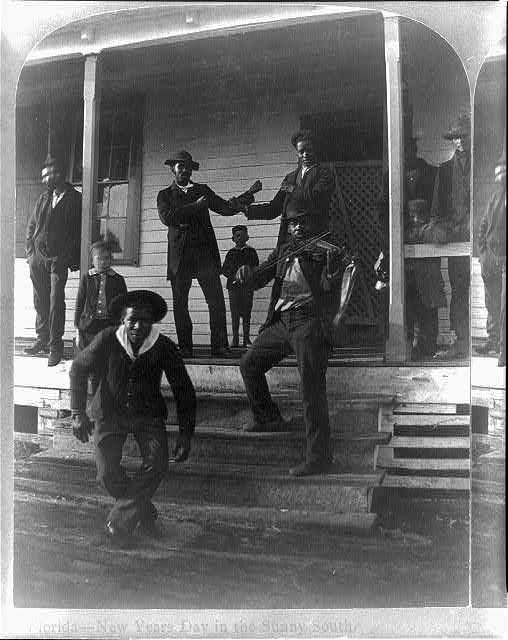An Exploration of Other Ways of Knowing & Generational Freedom in Florida, ca. 1886
📸: “Florida-- New Years Day in the sunny south” Photography by George Barker, ca. 1886, sourced from the Library of Congress Prints & Photographs division
Mirror Moment(s): Other Ways of Knowing & Generational Freedom
I hope y’all have been easing into 2024 this month! To celebrate, I am sharing this archival image from the Sunshine State celebrating the New Year. Yes, I know we all have our opinions about Florida regarding whether it is Southern enough. However, I would like to restate that D.O.T.S. was founded to not rigidly define the South but to foster dialogues about the complexity of the South.
The summary describes the photographic “stereograph showing African American men and children outside a building. One appears to be dancing; another man plays a violin.”
Just like the fiddler on the steps, this beautiful image is composed lyrically. The framing of the photograph brings the viewer’s attention to four central African American men. The two men on the steps leading up to the porch have sharp right angles in their legs to add rhythm. While the two men on the porch mirror those angles in their arms. The men on the foundation of the porch mirror each other’s sharp dance moves. Or perhaps they are mirroring the fiddler? These men capture & hold my attention.
It is clear, that there is music & dancing in this image. The fact that there is a Black man playing the violin in 1886, an instrument society has labeled as classical & thus more closely associated with whiteness, is a profound reminder that African Americans have participated fully in all of the arts. I want to believe these Black men are dancing & playing for themselves. I want to believe they are welcoming a new day in a new year with agency.
However, I’m not sure if everyone in this archival image is African American. It is unclear the race of the small children and the men outside the pillars of the porch.
George Barker, the photographer, is more known for his work as a landscape photographer. A majority of Barker’s work is void of human presence. According to the National Gallery of Art, Barker “made over 800 negatives of Niagra Falls.” Based on my research, I can’t tell what made Barker turn his camera lens from the land to these Black men. If it was documenting the beauty of a culture he didn’t know or if he sought entertainment from them. Either way, these are questions the archives force us to ask & must be reckoned with.
Still, it is undeniable that Black Southerners compose a lyrical life for themselves. Furthermore, the frame of the porch pillars enables the four Black men to center themselves on the porch transformed to stage. Whereas in society their skills, joy, & leisure were pushed to the outskirts. Once again, the porch is representative of a theatre of rich storytelling (other ways of knowing). The fact that we can never be sure if the stage they crafted was well respected or mocked is a point of tension we must interrogate together.
Here, within D.O.T.S., we know that the porch, verbal stories, & embodied knowledge are respected outside of institutional approval. Within the D.O.T.S. lineage, these four men are respected storytellers on a world stage rooted in the South. Because after all, the South has always had soemthin’ to say.
Thank you for being here! Please continue to spread the word about D.O.T.S. to your community.




